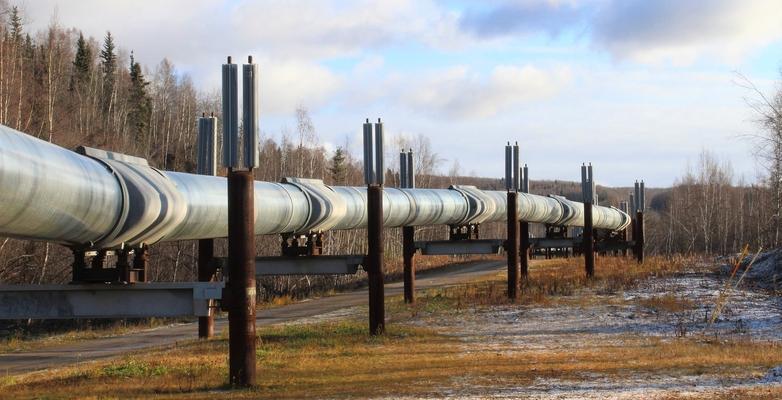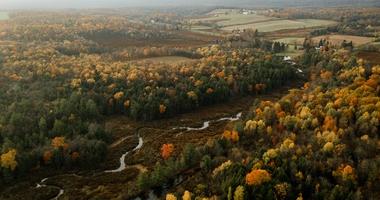
Climate 101: Oil & Gas Pipelines
The science is clear: Any new fossil fuel infrastructure threatens our ability to prevent catastrophic warming. So why are we still building pipelines?
Over the past decade, oil and gas pipelines have been the site of some of our biggest climate battles. Across the United States, climate activists, community members, and organizations have fought hard to oppose new pipelines. And for good reason.
Yet just last month, the Biden administration approved the Willow Project: an $8-billion oil project on the 23 million acre Alaska's National Petroleum Reserve. The project has the potential to emit 280 million metric tons of carbon emissions over its 30-year lifetime.
Let’s dig into just how harmful fossil fuel infrastructure can be.
What Are Pipelines?
Pipelines have transported oil and gas across the United States. Now, the United States has the largest oil and gas pipeline network in the world at a whopping 2.6 million miles.
This network is made up of several different pipelines, including:
- Small gathering lines that connect wells to processing facilities.
- Medium feeder pipelines that transport liquid hydrocarbons like crude oil and natural gas liquids from oil and gas fields.
- Larger transmission pipelines that carry the products to the destination regions or countries.
- Distribution pipelines that funnel the processed fuels to homes and business.
Why Are Oil and Gas Pipelines So Harmful?
Carbon Emissions
Whether it’s severe weather events, rising sea levels, or an ever-warming planet, each day brings new evidence that the effects of climate change are here – and that we desperately need a just transition to clean energy. Investing in fossil fuel infrastructure does just the opposite. The Intergovernmental Panel on Climate Change’s latest report spells it out: Adding even more fossil fuel infrastructure will push us past our climate goals.
Building more pipelines could drive climate change for decades to come. Even just one additional large-scale pipeline could lead to millions of metric tons of carbon dioxide emissions annually – the equivalent of adding dozens of coal plants or millions of passenger vehicles.
If the United States is going to reach its emission reduction goals, we can’t afford to build new pipelines – or even keep running the ones we do have.
Disruption of Land, Ecosystems, and Communities
From the moment construction begins, pipelines disrupt and destroy the ecosystems they cut through. Building a pipeline across thousands of miles is no small project.
When pipelines crisscross through forests, they end up cutting the land into smaller pieces of ‘forest fragments’. The negative effects of forest fragmentation on the health of its ecosystems are well documented: declining biodiversity increases susceptibility to all sorts of threats like wildfires and diseases.
Pipelines also disrupt communities and livelihoods. People living in the path of pipelines can be forcibly separated from their land, homes, and resources. While landowners can sell or lease their land out to projects, some find that Big Oil has left them with no choice. These people may be surprised to find out that a fossil fuel company has been court-authorized to take or use their land.
Pollution
Once up and running, pipelines continue to threaten human and environmental health.
Compressor stations – those industrial facilities needed every 40-70 miles to keep natural gas moving – are especially heavy polluters. In addition to greenhouse gases such as carbon dioxide and methane, compressor stations emit nitrogen oxides, carbon monoxide, volatile organic compounds, and particulate matter.
Nitrogen oxides (NOx) are a group of gases that are notoriously unhealthy for us to breathe in. Nitric oxide (NO) and nitrogen dioxide (NO2), two compounds in this group, are emitted from the combustion of fossil fuels. In the presence of oxygen and a bit of sunshine, these NOx gases form smog that can harm our respiratory and nervous systems.
Compressor stations are also loud. One Pennsylvania resident described the compressor station he lives about half a mile away from as sounding like “a truck in the driveway.” Imagine constantly hearing that when you’re trying to work, relax, sleep, or even when you’re trying to have a conversation at home.
Spills, Leaks, and Explosions, Oh My!
Pipelines almost inevitably bring spills, leaks and even explosions – especially as the millions of miles of pipelines continue to age. Federal data shows that from 2003 through 2022, pipeline incidents resulted in 257 deaths, 1,085 injuries, and over $12 billion in financial damages in the United States.
The Keystone pipeline, for example, had 22 spills from the time it began operating in 2010 through the end of 2020. Its most recent spill, in December 2022, leaked more than half a million gallons of crude oil into a Kansas creek and farmland. This was the largest spill in the history of the Keystone pipeline and the largest onshore oil spill in the United States since 2013.
Direct exposure to crude oil can lead to all sorts of acute health impacts like respiratory distress, memory loss, and headaches. Even without direct exposure, oil can reach us by contaminating the water we drink and bathe in, the soil we grow our food in, and the air we breathe.
Because natural gas is easily ignitable, when it leaks, it can also explode if it comes into contact with a spark or flame. Last year, a pipe containing natural gas exploded into a 450-feet-high fireball at a natural gas export facility in Freeport, Texas. Freeport, the responsible company, estimated that the event burned 1.6 million cubic feet of natural gas.
The explosion exposed not only the volatility of gas, but of the gas market. The loss of this US export sent gas prices up throughout Europe, as the explosion rocked an unstable global market.
Let’s Build a Clean Energy Economy
It’s time to transition away from our fossil fuel-centered economy. We need a clean energy economy and we need it now.
To contribute to the clean energy revolution and help build a world that works for people and communities, join our digital community advocates around the world today.




